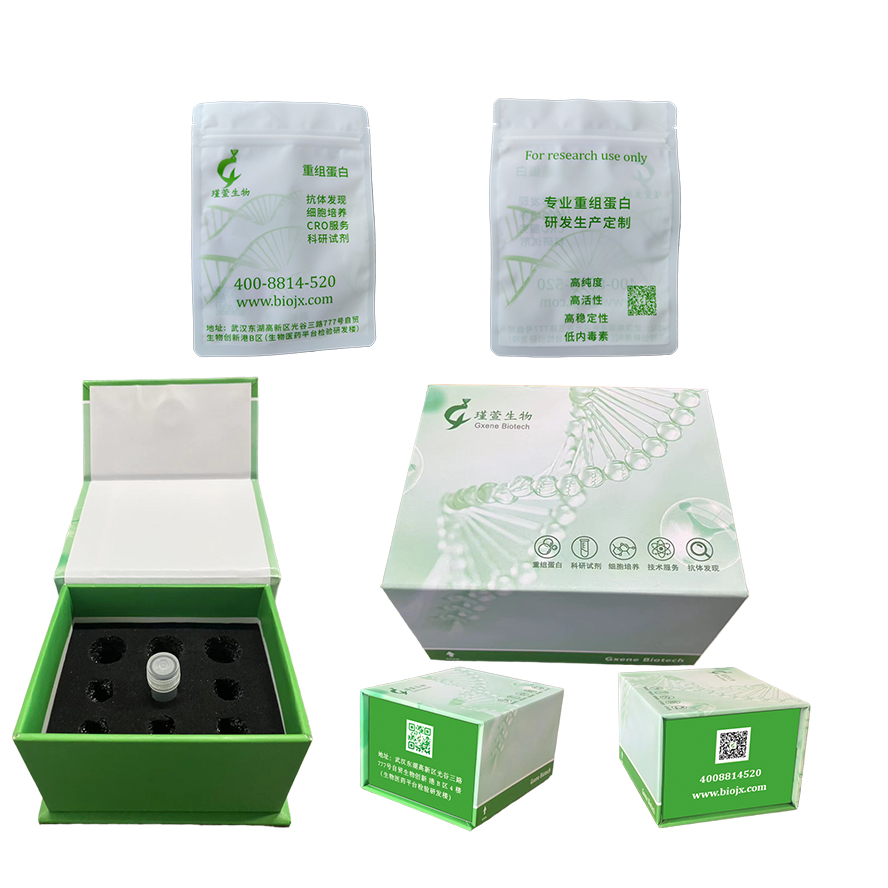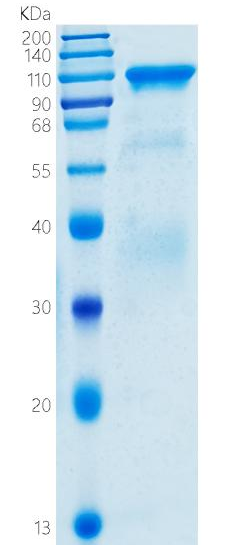



肾素是一种特殊的肽链内切酶,在血浆内将血管紧张素原转化为血管紧张素 I 方面发挥着独特的功能。这种酶活性引发一系列反应,导致血压升高和肾脏钠潴留增加。肾素在启动血管紧张素通路方面的精确性强调了其在调节体内血压和电解质平衡方面的关键作用。
促销: 满免 购物 满300元 免运费。

商品编号: GX004905 库存: 100支
上市时间: 2024-11-20 14:43:25 浏览次数: 581次
研究方向
肾素是一种特殊的肽链内切酶,在血浆内将血管紧张素原转化为血管紧张素 I 方面发挥着独特的功能。这种酶活性引发一系列反应,导致血压升高和肾脏钠潴留增加。肾素在启动血管紧张素通路方面的精确性强调了其在调节体内血压和电解质平衡方面的关键作用。
Measured by its ability to cleave a fluorogenic peptide substrate Arg-Glu(EDANS)- Ile-His-Pro-Phe-His-Pro-Phe-His-Leu-Val-Ile-His-Thr-Lys(dabcyl)- Arg. The specific activity is >20 pmol/min/µg, as measured under the described conditions
Centrifuge the vial before opening. Reconstitute to a concentration of 0.1-0.5 mg/mL in sterile distilled water. Avoid vortex or vigorously pipetting the protein. For long term storage, it is recommended to add a carrier protein or stablizer (e.g. 0.1% BSA, 5% HSA, 10% FBS or 5% Trehalose), and aliquot the reconstituted protein solution to minimize free-thaw cycles.收到重组蛋白产品之后请检查蛋白冻干粉末是否贴于瓶底,如果粉末浮起,开盖之前请先低温离心。将蛋白用说明书中指定的缓冲液复溶至0.1-0.5 mg/mL(请注意蛋白复溶浓度不能低于0.1 mg/mL),室温平衡5-10 min保证充分溶解,复溶过程中请不要剧烈涡旋及吹打蛋白溶液。如需长期储存,建议复溶时添加载体蛋白或者稳定剂(如0.1% BSA, 5% HSA, 10% FBS 或者 5% 海藻糖),同时将复溶后的蛋白溶液按照需求进行分装,储存于-20°C至-80°C,随取随用,避免反复冻融。
Human Renin is a member of the aspartyl proteinase family produced largely in part by the juxtaglomerular cells in the kidney. Renin differs from the other members of this class by having a pH optimum near the neutral pH region with native substrates instead of a pH 2.0 to 3.4 range. This more neutral pH optimum allows it to be functional in the plasma. Renin also has a very high selectivity for substrates due to a long peptide recognition on either side of the peptide bond undergoing cleavage. An octapeptide substrate was the minimum length to be cleaved by Renin. Renin plays a crucial role in the regulation of blood pressure and salt balance through the cleavage of angiotensinogen, which is the only known physiological substrate of Renin. Renin releases the decapeptide angiotensin I, which in turn is further converted to vasoactive hormone angiotensin II by angiotensin converting enzyme (ACE). Renin is produced as prorenin with 43 pro residues at the N‑terminal of mature Renin. The inactive prorenin becomes activated proteolytically by trypsin, cathepsin B, or other proteinases.